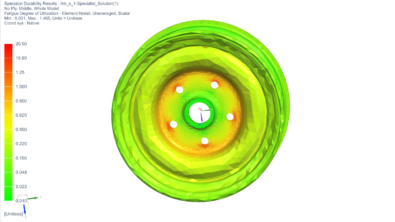Student-Made Car Gets 2100 MPG

Fuel economy is a concern for most these days, whether you own a car, work in the auto industry, or are just conscious of environmental impact. For students who participate in the SAE Supermileage contest though, fuel economy is everything.
The team of students from Université Laval in Quebec City, Canada knows this better than perhaps anyone, as their car took the top spot in this year’s Supermileage event. They were able to achieve 2098 MPG—nearly double that of the second place winner, Brigham Young University, whose car topped out at 1244 MPG.

“The advantage with NX is that the whole process is embedded in a single software,” transmission team leader Xavier Garant said in an ENGINEERING.com article. “[W]hen we are in the process of designing a new part, we can switch back and forth between modeling and finite element analysis to make adjustments. This simplifies the iteration process for us.”
Given the critical role weight plays in relation to fuel economy, it comes as no surprise that one of the team’s main goals was to reduce the weight of their SAE vehicle. They succeeded in shaving 2 or 3 pounds (1-1.4 kg) off the car, bringing the total weight down to an impressive 87 pounds (40 kg).
The team reused a previous year’s vehicle shell that already was in good shape with regard to weight and aerodynamic drag, thanks to past work with FEA and CFD analysis.
Reusing the shell allowed U Laval’s team time to optimize other vehicle parts, team manager Bruno Désaulniers said in a press release. To do so, they used carbon fiber and parts made from aluminum, a lighter weight alternative to traditional steel.
“FEA enabled us to analyze the trade-off between using aluminum and steel. Aluminum has less weight but is less rigid,” Xavier explained.

“The applied forces were calculated using the maximum output torque from the engine and the transmission ratio. The simulation also accounted for slight misalignments of the rear sprocket, to validate the strength should this undesirable situation occur,” Xavier said.
For the full vehicle specs and more information on the team’s success, be sure to read the Engineering.com article this post is based on: University Students Talk How Their SAE Car got 2100 MPG.
Thanks go out to Xavier Garant for providing the images of the transmission sprocket to use in this post.




